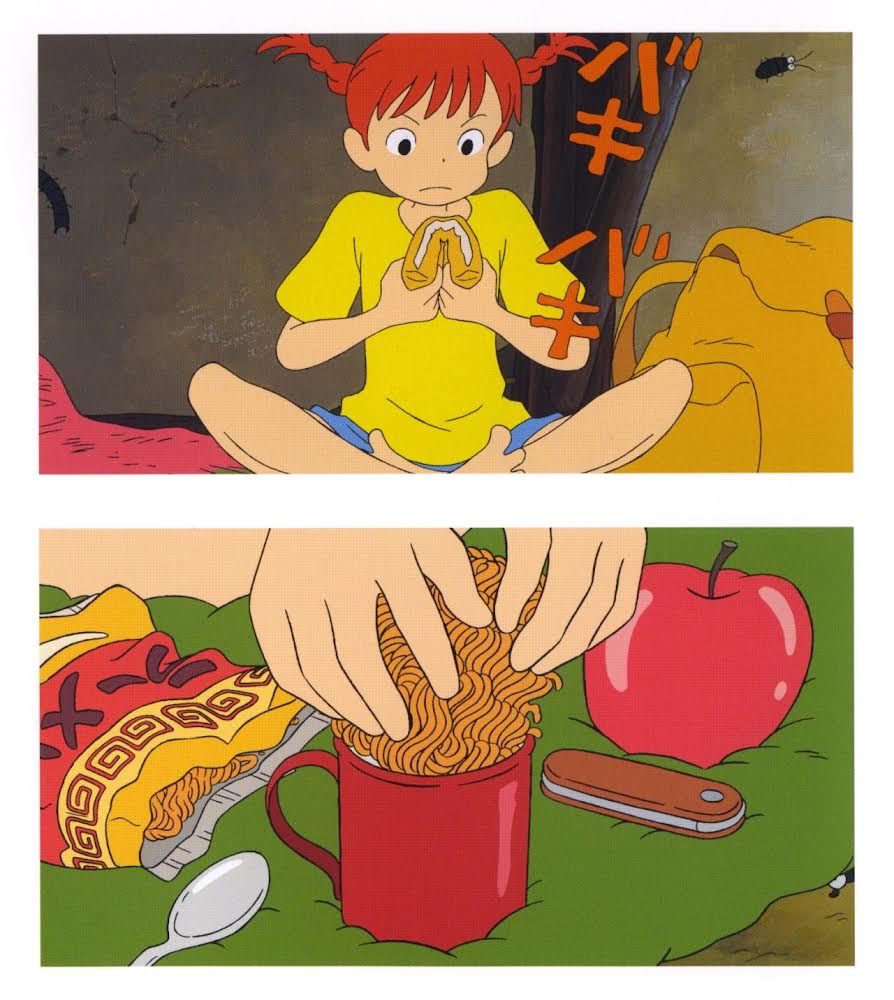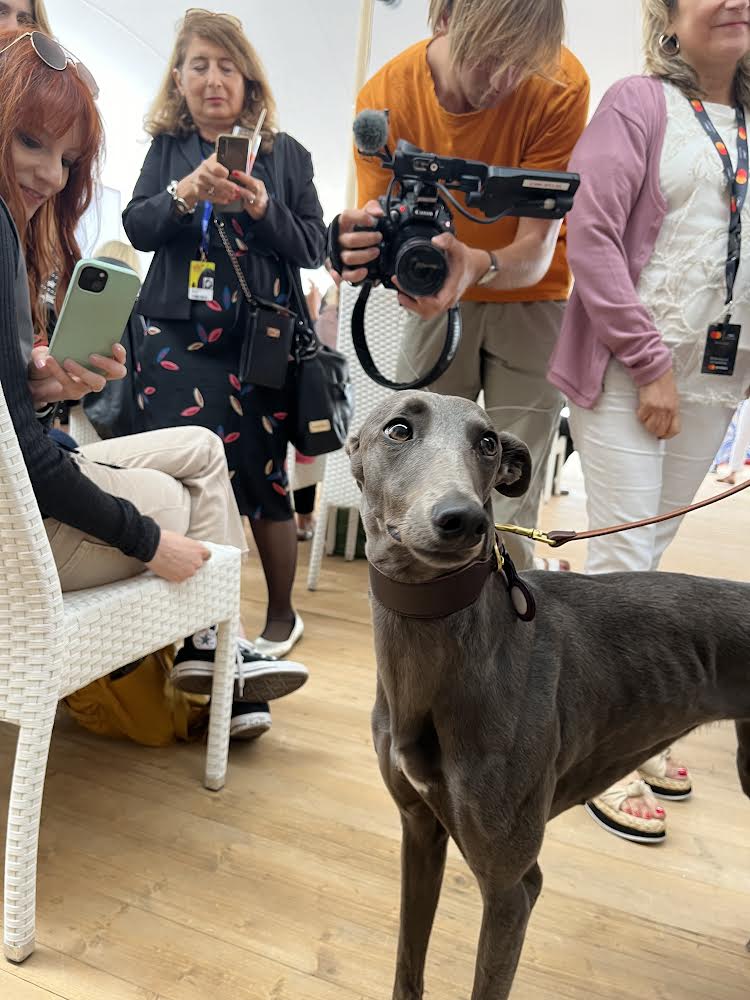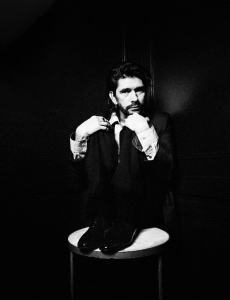The good, the great and the ugly at Cannes 2024
One of the best things at Cannes this year ran just twelve minutes and eleven seconds long. Hayao Miyazaki’s Yado-sagashi or House Hunting (2006) played at the festival this year to commemorate Studio Ghibli’s honorary Palme D’Or: the film is one of three that had never been screened outside of Japan, created especially for viewing at the studio’s Mitaka-based Ghibli Museum. It stars Fuki (Akiko Yano), a sprightly adventurer, as she makes her way through the world with nothing but the apple-filled pack on her back. Sounds rise out of the land and come down from the sky as she takes a narrow, mystical path.

According to a press release, this highly sensory audio was created with a focus on the “rich onomatopoeia” of the Japanese language, and the range of the human voice. More accurately, it was the range of the voice belonging to the comedic personality Tamori. Animating the weather and bringing to life the landscapes with deeply-felt percussives drawn as kanji, the overall effect was utterly charming and wonderfully absorbing.
Every Cannes is a mix of pleasant surprises, and unexpected, destabilising upsets. Vulture writer Rachel Handler summarised the latter well in a recent Instagram story, where she explained that festival organisers had accosted her into an impulsive Zara purchase by complaining that her trusty little black dress, one she had worn at Cannes several times previously, wasn’t “formal enough.” She wrote: “This is just one example of how they practise random psychological warfare.” The sentiment rang true – whether it’s ushering you into a screening that begins after midnight, closing off access to a theatre’s nearest toilets (hours ago having plied you with rosé), or telling you that your objectively nice flats don’t count as cocktail attire, it can feel like the festival is constantly inventing rules and indignities for the purpose of unsettling and disorienting you.
This feeling is especially acute for non-white attendees. Despite the global cinema on show to spirit you away, you are nevertheless physically in a small, French city, populated by people irrevocably set in their ways. While instances of microaggressions at the festival have been documented previously, this year a far more disturbing story came to light. In a post published by Kusini Productions, a British-Nigerian attendee detailed how she and a friend were subject to a violent attack while they were at Pint House, a bar on the Rue des Frères Pradignac. According to the report, the bar staff punched the victim, stole her phone, and pulled out chunks of her hair; and when the police arrived the abuse continued, with the victim being thrown against walls, kicked, dragged, and slapped rather than patted down. The fact that an incident like this could go under the radar (the victim also said the police station refused to file a report or take a statement on the matter) is a terrible indictment of a faux-progressive culture that only purports to help the marginalised.
***
When, as part of a press roundtable, I spoke to Payal Kapadia, the filmmaker behind All We Imagine As Light – this year’s Grand Prix winner: a funny, beautiful, politically-engaged fest favourite whose story transpires across cities like Ratnagiri and Mumbai – she commented on an apparent gap in the programming. “I really feel strange that there are not more female filmmakers at this festival,” she said, wearing a bright red pin in support of Sous les écrans la deche, a collective for film festival workers that organised a strike at Cannes in order to protest their precarity and current labour conditions. Kapadia’s film also contains scenes dedicated to union solidarity among Indian health workers. “We’re going from a very feudal system into extreme capitalism,” she explained, giving context to a moment in the film where one of her characters lobs a rock at a luxury apartment building. “There was a moment of socialism in our country, which has now fizzled completely. For me, is really the ghastly outcome of crony capitalism there.”
Unfortunately, the complex excellence of Kapadia’s film is the exception rather than the rule this year. It’s been a mixed bag of a 77th edition for Cannes, a primarily Western-centric festival whose official selection is, as author Mark Asch astutely observes in a dispatch for Film Comment, “reliably larded with mediocre films by directors who won something here long ago.” There was a general sense of sophomore slump: The Shrouds, for example, is a pensive, personal David Cronenberg project, though more robotically written than Crimes of the Future (2022) and not quite as enthralling. The Substance – Coralie Fargeat’s highly anticipated, Demi Moore-starring follow-up to 2018’s Revenge – is stylish and shocking to start off, but the thrills seem to cheapen as the runtime drags on past the two hour mark and its plot holes begin to bother.
As for the highlights of the festival this year, a number of delightful moments came from its needle-drops. Tyler Taormina begins his festive tale, a Directors’ Fortnight pick titled Christmas Eve in Miller’s Point, with a rousing, upbeat cover of Johnny Mercer’s 1940 standard “Fools Rush In”. Starring a cadre of young actors including Michael Cera and Elsie Fisher, the film toys with nostalgia, fantasy, and social politics, rendering a winter wonderland you can practically taste. When I spoke to Taormina, the American director explained “the trick of the film”: “The music is 60s pop, which is not Christmas music, but it sounds like Christmas music.”
According to Taormina, many girl groups active at that time went on to make some of the “most recognisable” Christmas songs, “so we associate their other music with the holidays as well, which is our cheat code.” The usually-more-stuffy red carpet played host to sexual, house-inflected tracks by rappers COBRAH and Slayyyter, for the premieres of Kinds Of Kindness and Anora respectively – that the DJs of the beachfront parties this year neglected to interpolate neither “BRAND NEW BITCH” nor “Daddy AF” into their sets seems like a major oversight. But then again, there’s always the possibility that I was simply at the wrong parties.
A celebration one never regrets attending is, of course, the Palm Dog: the awards ceremony for the best pooches in each year’s crop of pictures. Tributes went out to the ensemble of pups featured in a cutaway during Yorgos Lanthimos’ latest triptych, and Xiao Xin, the young (3-year-old) whippet star of Guan Hu’s Black Dog, a Chinese language film that also deservedly picked up the festival’s Un Certain Regard prize. But the winner of the day was Kodi, the 9-year-old blonde griffon cross that played Cosmos, the titular hound in Laetitia Dosch’s Dog on Trial, a Swiss-French courtroom comedy based on a true story.

Introduced by DJ BoBo’s “Chihuahua” and often sponsored by a beverage brand, the Palm Dog is a collation of good vibes along the shoreline on the Friday before the end of the festival – whether they are stand-ins, the stars themselves, or aspiring canine actors, the dogs present are just as game for a cuddle as they are a close-up. The Guardian’s Peter Bradshaw, a member of the jury at this year’s awards, called the ceremony the “most purely surreal and idealistic event at Cannes”. “My understanding of what’s happening becomes less each year,” he admitted, before handing the mic back to Palm Dog founder and journalist Toby Rose.
The lesson of this Cannes felt like the lesson of every Cannes that came before: to put the people before the films. In her canny reflection on this year’s festival, writer-programmer Devika Girish discusses the festival as a site for “exercises in world-building”, films as a conduit of “utopian promises”, and cognitive dissonance as “an axiom of the moviegoing experience” – one that is increasingly wearing thin in a climate of exploitation and military volatility. Though Cannes may ultimately be a trade show, the weight of its cultural legacy can be felt in real time; it’s a space that has for decades fostered connection between creatives, facilitating exchanges of ideas and inviting introspection.
The festival is only as great as its attendees, whose labour is instrumental to its function. The hype cycle for competition films begins with the effective equivalent of an applause-o-meter, when dubiously-sourced standing ovation metrics are dutifully published on the websites of trade magazines; the mythos of these films then emerges online, via acquisition news, rushed, cursory junket interviews, or critics who pen first-look reviews to a deadline of right fucking now. It is this work that lends credence to the various shades of PR spectacle at hand, without which the powers that be could not position the festival as a progressive force and, more pertinently, a purveyor of the avant-garde. When Thierry Frémaux asks for a Cannes without “polemics” he is striving for the type of utopia that deifies commercial interests – and a breed of superficial art that can only gesture vaguely at engaging subjects. And where’s the fun in that?




